Listed: Meet the architects behind some of Adelaide’s most stunning homes
Thinking of building? Looking for design inspiration? Check out stunning homes from Adelaide’s top resdiential architects and learn a more about the people behind the creations.

SA News
Don't miss out on the headlines from SA News. Followed categories will be added to My News.
They design houses that grace magazine covers and make the neighbours envious.
Whether it’s a modern eastern suburbs mansion, a sensitive addition to a historic house, or reimaging an existing home for a growing family, an architect’s vision can create or transcend a homeowners’ desires.
South Australia has a rich architectural pedigree with major firms such as Hassell and Woods Bagot founded in Adelaide.
But great architecture is more than just about how a building looks. It brings form and function together to create properties that improve wellbeing, mental health and can respond to the changing needs of its occupants.
The Advertiser today profiles some of South Australia’s most influential and exciting residential architects who share their thoughts on good design, their favourite work and whether the houses of today are doing enough to combat climate change.
DAVID BURTON, Williams Burton Leopardi
Bachelor of Architectural Studies and a Bachelor of Architecture (First Class Hons – Conservation), University of Adelaide (1993)
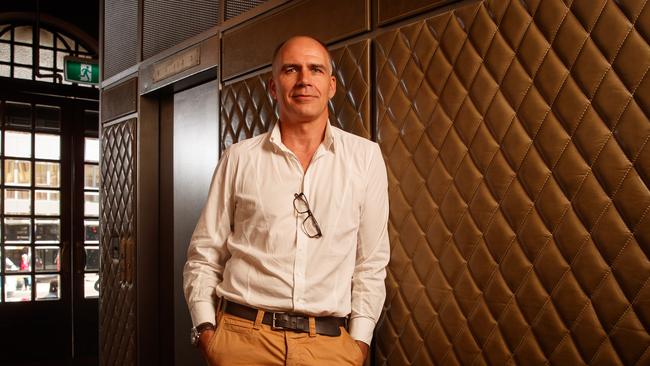
What drew you to architecture?
I always liked drawing and planning out things as a kid, including making models and dreaming up different environments. My sandcastles always had streets, bridges, tidal walls and fortifications. I loved books that explained how things worked – especially those ‘cutaway’ books that gave insight to imagined spaces or film props.
Which residential project are you most proud of?
One project that transcends all our values is the North Adelaide Barn. It looks at adaptively reusing and saving a decrepit State Heritage-listed barn, overlaid with a contemporary vision of living to create a space the client never knew they needed and now can’t live without. It was at the same time ambitious and restrained, sensitive and challenging and in parts lightly touched and in others highly refined.
Why is architecture so important today?
It’s better to do things well once rather than live in a disposable society. To that end, approaching design to provide a legacy, engage with the community, and minimise waste and redundancy is a good thing. Good architecture will do this.
Are we designing houses that are climate resilient, or do we need to do better designing houses that will reflect Adelaide’s changing climate?
We need to consider the neighbourhood rather than just the house and make sure there is a variety of choice in really well designed dwellings.
We see a lot of redundant space in off-the-shelf housing and we would be better served to consider smaller, more carefully planned spaces, and housing that reflects a time in our lives.
There is also a huge opportunity to clump things like small micro grid power storage, water for irrigation, community functions and shared productive garden spaces. Think of it as a ‘residential ecosystem’.
TONY GIANNONE, Tectvs
Bachelor of Architecture, University of Adelaide (1982)
President Australian Institute of Architects
Professor, School of Architecture and Built Environment, University of Adelaide
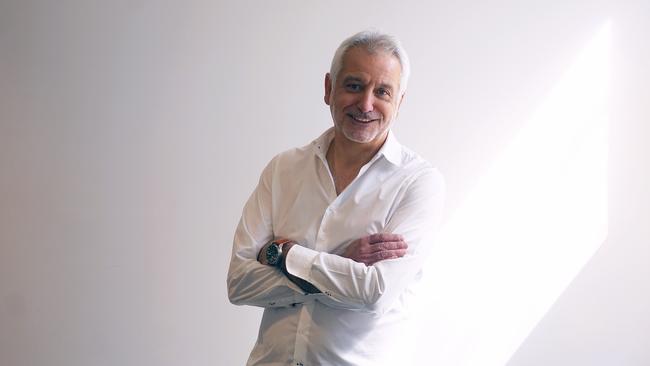
What drew you to architecture?
My dad was a roof tiler and I was exposed to building sites from a young age. Dad says I didn’t like to get my hands dirty so I suppose architecture was one way of not disappointing him. Fran Bonato and Gary Bonato (partners in Tectvs) have Venetian furniture craftsmanship in their DNA, so we have all been well placed in the residential design space.
Which residential project are you most proud of?
My own (previous) family home because our homes hold so many memories of family celebrations in the circle of life, and that is what homes are in many respects, the carriers of memories.
Why is architecture so important today?
Our built forms and spatial creations are a backdrop that influence peoples’ way of life and beliefs. It’s not something that should be taken for granted.
As a profession we respond to the demands and uncertainty that project briefs will request. History shows us that in most instances we return to first principles to respond; ventilation, sunshine, fresh air, movement, nature and craving for space, albeit with the addition of the now-mandatory screen.
It will be interesting to see if the policymakers respond to the wish for a backyard as opposed to the balcony as the diaspora to the regions intensifies in the great revaluation of the way we live.
Are we designing houses that are climate resilient, or do we need to do better designing houses that will reflect Adelaide’s changing climate?
In regard to houses and climate – I think we can do a lot better particularly if we stop worrying about style and start responding to the fundamentals of architecture as shelter; keep the sun off the glass, let the light in and open the windows.
Obviously the need for sustainability, carbon neutral and human-centric design in all we do needs to be at the forefront of our design principles and I think here lies the answer to any design ethos, one free of style.
REBECCA RYAN, Rebecca Ryan Architect
Bachelor or Architecture, Honours (First Class), UniSA (1996)
Business and Practice of Architecture, Deakin University (1998)

What drew you to architecture?
I always loved puzzles, and architecture is one big puzzle. My grandpa and uncle were builders, so I would sometimes see the hand-drawn perspectives of buildings that I always admired. I also had a very influential design teacher at school who had a passion for architecture, so he encouraged me to pursue a career in architecture.
Which residential project are you most proud of?
Each project is completely individual. It is a reflection of my interpretation of the client’s brief, which isn’t always what the client initially thinks they want. The Rose Park House is a great example of client and architect collaboration and one that I am very proud of.
Why is architecture important today?
Due to the Covid pandemic we have been forced as a society to stay at home more, or stay in our workplace without venturing out much, so the design of the space around has never been more important. The design of flexible space has always been popular, but it has become even more so in the past year, due to changing circumstances and the ability to change or adapt the use of space.
Are we designing houses that are climate resilient, or do we need to do better designing houses that will reflect Adelaide’s changing climate?
We need to pursue as many renewable sources as possible and allow for battery storage of solar power and suitable power outlets in garages for electric cars. For the future we should be striving to achieve a sustainable house that improves our quality of life, conserves energy and conserves resources by using recycled materials where possible. I also hope that making a smaller footprint on the earth for each house will become a trend for future housing, making adaptable spaces that can be used for multiple purposes and reducing the need for oversized spaces that can become cold and soulless. Big isn’t always better.
SALLY WILSON, Archaea
Bachelor of Design Studies (2006) and Masters of Architecture (2008), University of Adelaide

What drew you to architecture?
I was always drawn to a degree in art. My design teacher in high school, now also an architect (Mark Thomas – of Goodhouse) played a very important role in my passion for design. Then thanks to my mum, spending many weekends with a wonderful SA architect, Angelo Ali, who is married to the artist Cathryn Scott Ali, the collision of art and architect became concerted in my mind. I just wanted to draw like Angelo.
Which residential project are you most proud of?
Kingswood House. It won the SA Australian Institute of Architecture 2021 John Shenck award for residential architecture, SA AIA emerging practice prize and just named in the House & Gardens Top 50 Rooms – Indoor/Outdoor Space. To be named among such talented national practices is a wonderful achievement for our small SA business. I think the success and strengths of Kingswood House was driven by our clients inviting us design all elements of home, from the architecture to the detailing of the interiors and furniture design.
Why is architecture important today?
In light of the recent pandemic, residential architecture has become about more than just the built environment, it’s a part of our culture, our shelter and what we have seen increasingly, our workplace and respite under the same roof. There has been an increased focus on where we live and the quality of these spaces to support our changing lives.
Are we designing houses that are climate resilient, or do we need to do better designing houses that will reflect Adelaide’s changing climate?
Our practice is seeing more clients requesting homes that are sensitive to the environment. As a state, it feels as if we are becoming increasingly aware of climate change and of the need to reduce our running costs. However it is still only a small percentage of homeowners that choose to engage the services of an architect to help them achieve this. Site-responsive passive architecture that prevents excessive heat gain and ensures homes perform at their peak with little running costs is achievable with contemporary styles of architecture.
DINO VRYNIOS, Das Studio
Master of Architecture, University of Adelaide (2009)
National Emerging Architect Prize Winner, 2021 Australian Insitute of Architects Awards
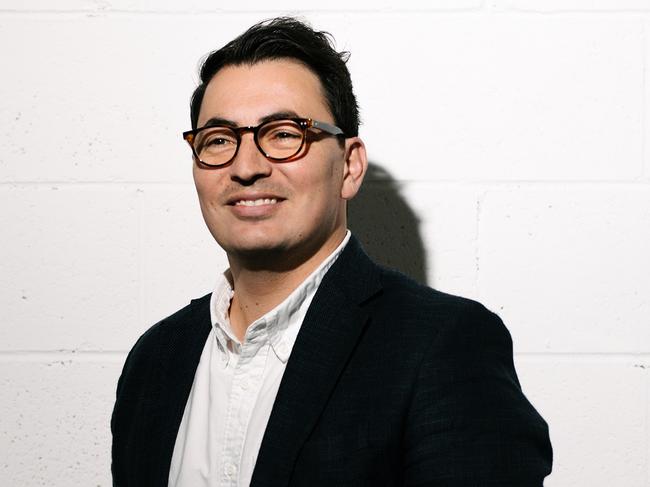
What drew you to architecture?
Whether it be in my mind, on paper or with my expansive Lego collection, I had an insatiable appetite to create things. The earliest hints at architecture as a career were on Saturday afternoons when I would often visit open inspections, collect the old flyers with hand drawn renderings and spend the weekend recreating, modifying and presenting my solutions to anyone who would listen.
Which residential project are you most proud of?
A residence at Somerton Park was our very first new build. It is special for many reasons but mostly that it is a home designed for a close family friend who was willing to invest her life savings towards this project and us. It is certainly a unique home, one that responds to an interesting brief that sought to provide a heritage response to the street with a ‘green’ entrance and create industrial and Moroccan interior spaces that blurred into Bali style outdoor spaces.
Why is architecture so important today?
As the world gets more complex, I believe architects and designers will have an integral role to help navigate the interface between emerging digital and existing physical worlds. Our skillset and hardwired design thinking allows us to contribute positively to solving our planet’s wicked problems.
Are we designing houses that are climate resilient, or do we need to do better designing houses that will reflect Adelaide’s changing climate?
We can do better. To enable this, I’d like to see a transition in thinking away from design and construct to design and operate. This is important because it will provide a lens through which we consider the impact of all decisions we make to create our future environments and how they will consume or produce energy and reduce waste.
With the advent of more extreme weather conditions, there should be an uplift of higher performing homes – double glazing, better insulation, passive design principles. Less is more in terms of size.
MAX PRITCHARD, Max Pritchard Gunner Architects
Bachelor of Architecture, University of Adelaide (1970)
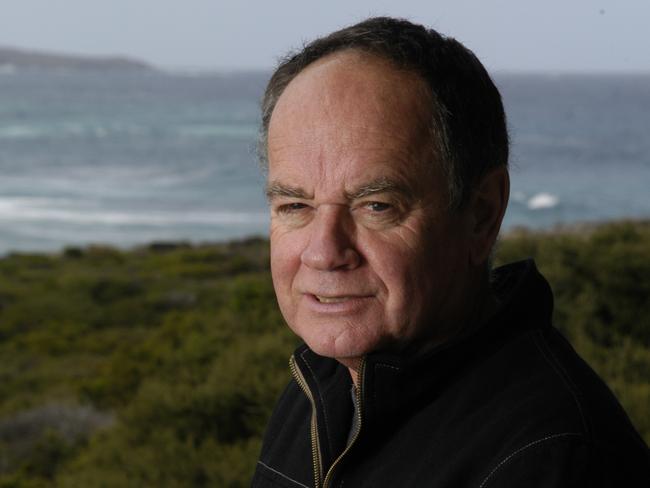
What drew you to architecture?
Farm life as a child fostered a joy in building and creating plus an early love of sketching.
Which residential project are you most proud of?
One of my earliest projects was my own house at Kingston Park, designed 35 years ago. I feel it has withstood the test of time as simple logical architecture designed to maximise winter sun for heating and ventilation for summer cooling with a simple building form, but achieving beauty through its transparency and dramatic structure.
Why is architecture so important today?
It’s easy in a way to design large but more thoughtful design is necessary for compact energy efficient house design.
Are we designing houses that are climate resilient, or do we need to do better designing houses that will reflect Adelaide’s changing climate?
My biased opinion is that architects have generally been well trained to design for climate but unfortunately, it is only a very small percentage of houses that are designed by architects. Many houses are designed with resale in mind and bigger is regarded as better. Sensible thermal design and relationship of houses to planted outdoor spaces is ignored.
KIRSTY HEWITT, Khab Architects
Bachelor of Architecture (Hons) UniSA (1996)
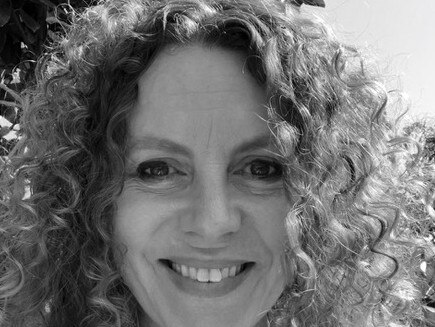
What drew you to architecture?
My grandfather was a carpenter and I grew up spending holidays with extended family in a tiny river shack he built. It was very small and humble but sited in such a way that it enhanced the experience of the place and encouraged an engagement with the outdoors. I think it was my first direct experience of architecture being about the whole site. I was also drawn to the dynamic nature of the profession, the potential diversity of projects and problems to solve.
Which residential project are you most proud of?
Spinifex House, Henley Beach. In some ways the design is a reaction to the new norm of oversized houses – it is a relatively small three-bedroom house which responds very well to a harsh set of site conditions and carefully navigates privacy with connection to its context. It has lovely spatial qualities with a warm and textured interior and a tough outer shell in response to its coastal environment.
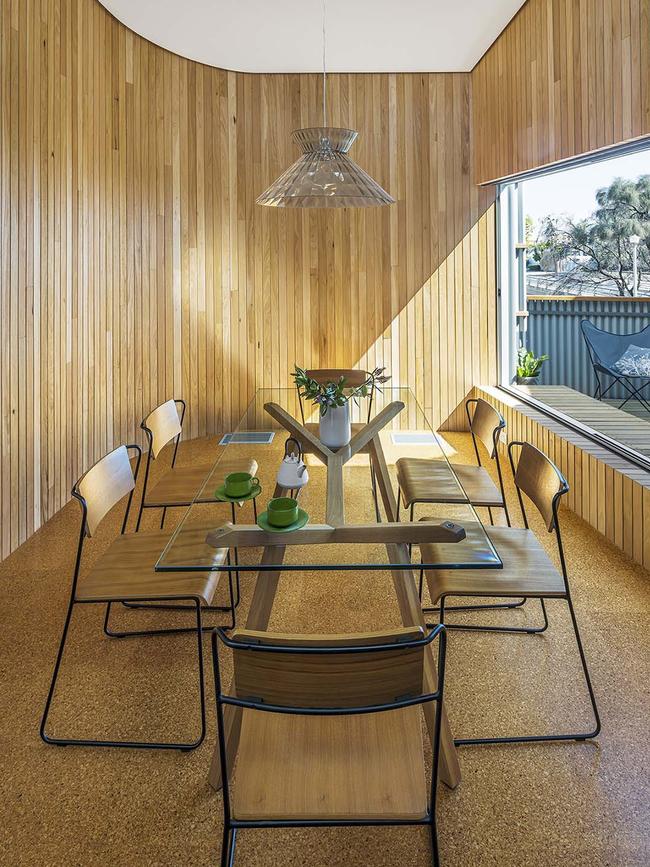

Why is architecture so important today?
In a social context marred by stress and disconnection, good architecture can help us connect with place, improve wellbeing and can have a positive impact on social fabric. Good architecture can bring us back out of the abstract/digital/screen world and help us connect with the natural environment.
Are we designing houses that are climate resilient, or do we need to do better designing houses that will reflect Adelaide’s changing climate?
There is plenty of room for improvement in how architecture can be more climate resilient. While architects need to encourage/educate clients to direct their budgets into (smaller) climate resilient homes, the mainstream community needs to let go of the desire for big houses and trust that good design can produce smaller houses that have higher quality living environments and are much more climate responsive than typical homes.
GREG BOND, Atelier Bond
Bachelor of Design and Bachelor of Architecture, University of Adelaide (2000)
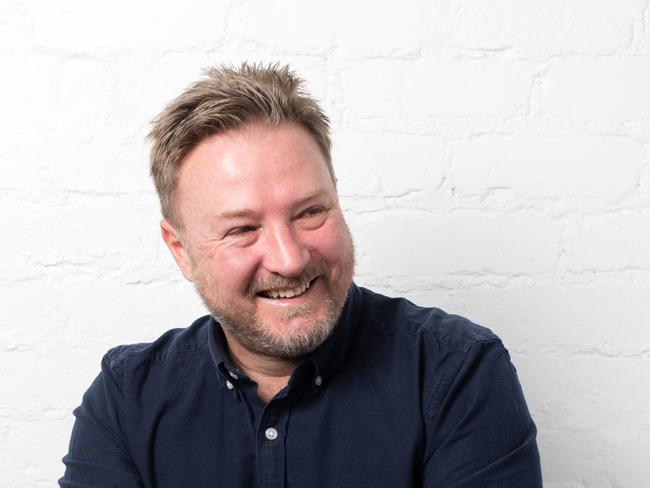
What drew you to architecture?
Like so many of my peers, I spent a lot of my childhood playing with Lego and drawing house plans for fun. But it was not until after a detour studying commerce that I woke up one morning and realised I needed to be an architect. It may sound hokey, but I can’t explain it in any other way, other than it was a calling.
Which residential project are you most proud of?
A Balhannah project dubbed The Big House on The Hill. The client came to us with the ultimate brief – ‘design us a house worthy of the site’ – and their trust in us from the get-go was an absolute gift, especially as we are still a relatively youngish studio. On top of living up to the promise of a gorgeous piece of Adelaide Hills land, we had to accommodate their large, multi-generational family. There’s no other way to describe the resulting footprint other than massive. As its designers, we had to be deliberate in the materials that were used to ensure it still felt like a home and not a hotel.


Why is architecture so important today?
Beautiful, well-crafted spaces add value in so many more ways than just monetary. We long remember the places that energise us, provide sanctuary, nurture our daily rituals and traditions, and help us come together and connect. The events of the past two years have reminded everyone how priceless it is to have spaces that make us feel good – it’s really that simple.
Are we designing houses that are climate resilient, or do we need to do better designing houses that will reflect Adelaide’s changing climate?
Unfortunately construction costs for bespoke architectural designs often mean people seek alternatives that may not leverage the best environmental outcomes, especially in the residential space. I am hopeful the advances in prefab and modular buildings will help to counter this issue. Still, we need to be more conscious about the razing of the greenscape in our old residential neighbourhoods because it keeps our streets cool and provides homes for native wildlife. Of course, all of us have a responsibility to do better, and I’d love for more people to embrace the concept of buying once and buying well.
MARCO SPINELLI, Architects Ink
Bachelor of Architectural Studies (1984) and Bachelor of Architecture (1987), University of Adelaide
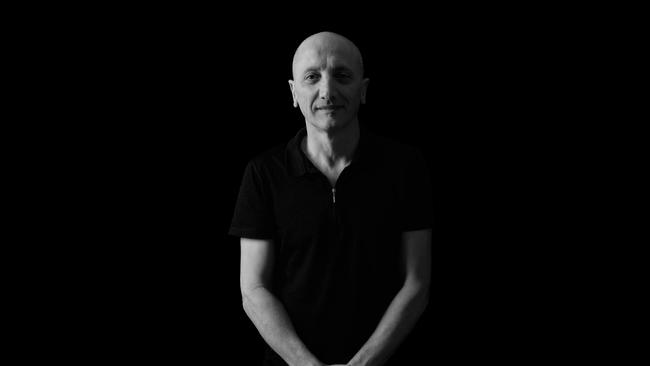
What drew you to architecture?
A combination of influences. My parents were in the fashion design industry, a tech drawing subject in Year 9, being reasonable at maths and geography, and then stumbling onto a favourable response to the question ‘What are you going to do when you grow up?’
Which residential project are you most proud of?
Plane Tree house, Glen Osmond was a project that offered the freedom to explore design ideas and to work with almost a single material – concrete. It also helped that the site had incredible views. We were fortunate enough to win the named award in the new houses category at the 2015 SA Architecture Awards. Hopefully it will be a timeless classic.
Why is architecture important today?
Art and architecture are enriching, can affect mood and productivity, and change lives. Architecture can guide, encourage, and even challenge our behaviours. We learn through the examples before us, and we need more good examples. Buildings outlast us, using scarce land and resources, so they should be carefully considered to enhance their benefits on the community, the users and the environment. They serve as a reflection of our times – a placemarker – if you like, of how life was lived. We want to leave a legacy that we are proud of.
Are we designing houses that are climate resilient, or do we need to do better designing houses that will reflect Adelaide’s changing climate?
As a society more value should be placed on the quality of the space we live in, not necessarily the quantity or resale value. Focus should be placed on considered planning, integrating sustainable technologies and design principles, and making informed material choices. Buildings should be designed with integrity and for longevity.
TAIN PATTERSON, Troppo Architects
Bachelor in Design Studies, University of Adelaide (1999)
Bachelor in Architecture (2001)
Director 2022 SA Architecture Awards
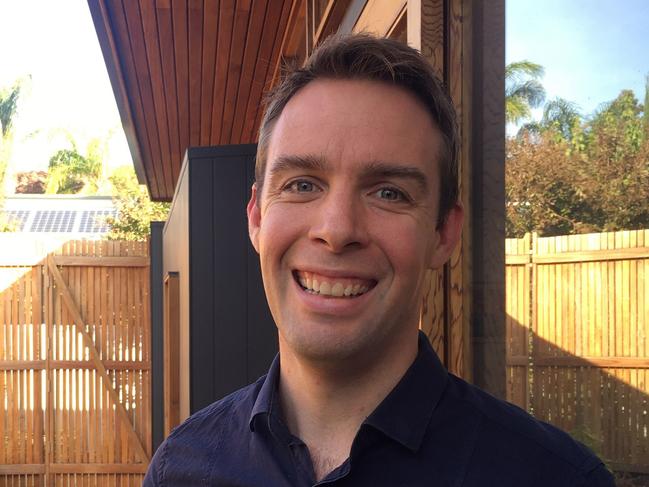
What drew you architecture?
I was inspired by my uncle who still works as an architectural draftsman in Queensland. He always seemed to be creating amazing homes, with broad openings, spaces designed to work with the sun and located to take in the views. They were very different to the conventional 1970s double-brick home that I grew up with in Adelaide. I liked that you could have an impact on the world.
Which residential project are you most proud of?
‘Outside The Box’ at Goodwood, was an addition and alteration to an existing house which won the 2020 AIA (SA) John Schenk Residential Award – Alterations & Additions. The house had a number of challenges; opposite a school, a south facing back yard with a large turn of the century return verandah villa which blocked northern sun. The new lounge is surrounded by garden, with plenty of natural light. Large doors, north and south, slide beyond the building, transforming the space into an ‘outdoor room’.
By working on the site of the old shed we also achieved minimal disturbance of the garden which was high on the client’s list of desired outcomes
Why is architecture important today?
We can’t keep producing monstrous housing with no consideration of their location and how much energy and resources they require to build, maintain and operate. We need architecture to lead and ensure all houses consider their location and it’s microclimate, their footprint, the source of materials and how much embodied energy was required to create it, the energy required to live in the house, the waste it produces as well as re-use and recycling.
Are we designing houses that are climate resilient, or do we need to do better designing houses that will reflect Adelaide’s changing climate?
Generally it doesn’t look like we are designing climate-resilient houses. Unfortunately, looking at housing developments, people’s first decision is which house plans from the brochure fit their newly-created block. It would be a good start if housing developers placed an emphasis on master planning new estates to encourage more sites that have a strong emphasis on northern orientation. But that said, I believe people are becoming more aware of the need for sustainable design and are becoming more knowledgeable. Whilst resilience to increased weather extremes and a changing environment will be evident, we would expect to see future housing have a renewed focus on connecting with the outdoors.
DAVID BROWN, BB Architects
Bachelor of Architecture (Hons), University of Adelaide (1991)

What drew you to architecture?
There were never any other alternatives that occurred to me. I had been designing and drawing things as long as I can remember, so this seemed the natural course to follow. Luckily I managed to get in to the course at uni, as I had no second option.
Which residential project are you most proud of?
Our Aldinga house is one of the nicest new builds we have done. With great clients, an impressive site we managed to design a great family home that responds well to the location and the client’s needs. A few years on and they still love it. So much so we are now designing a new home for them in Norwood, as their city pad.
Why is architecture important today?
We are suffering from the longterm effects of a lack of good design, good policymaking by those in control, and forethought. Hence we see poorly designed buildings that do not last, use too much energy, and don’t bring people joy. Well thought through, good architecture can really change the way people live and respond to their environment.
Are we designing houses that are climate resilient, or do we need to do better designing houses that will reflect Adelaide’s changing climate?
We, as a society, are building very average houses on the whole. Most do not respond to their context, orientation, or the climate. I would like to think that architecturally designed homes at least cover off most of those points. The biggest challenges with the Adelaide climate are the extremes. The super hot days, and cold winter days means designing a home requires some skill. Given that temperature extremes are likely to get worse, future houses that are well designed can easily incorporate good orientation of windows, good insulation, passive solar heating, use of prevailing breezes for ventilation, all in the attempt to save energy.
SEAN HUMPHRIES, Black Rabbit Architecture
Bachelor of Architecture (Hons) UniSA (2006)

What drew you to architecture?
A love for creating solutions and building things. It’s kitsch, but I am sure that a love for Lego played a part too.
Which residential project are you most proud of?
Number 6, Hyde Park was one of our early projects and remains one my favourite homes. It is such a dramatic transformation of the original house and captures the site so comfortably that I never tire of a cheeky visit.
Why is architecture important today?
The past two years have forced us all to think differently about how we interact with our built environment and the relationship between this and our health and wellbeing. Architecture and Interior Design is critically placed to not only capture people’s imaginations, but uniquely respond with smart design that truly addresses the needs of our communities. It also critically responds to the social needs of community, providing climatically responsive, spatially robust contributions to the built environment at a time when exemplars are sorely needed to shine the way forward and show that ‘home’.
Are we designing houses that are climate resilient, or do we need to do better designing houses that will reflect Adelaide’s changing climate?
Architectural housing inherently responds to context and climatic conditions, I am confident it will continue to do so moving forward. The amazing thing about architectural housing designs is that they can respond to their individual climatic situations in a manner that doesn’t need to wed itself to a style or trend, but rather just follows solid design principles.
CON BASTIRAS, Con Bastiras Architect
Bachelor of Architecture, University of SA (1985)
What drew you to architecture?
From my early childhood, I always had a keen interest in drawing along with a fondness for sculpting and the making of all kinds of things. I would draw portraits of my family along with drawings and models of buildings. My uncle had a joinery workshop and as a child I would visit and spend time there making models and various gadgets whilst observing him craft objects out of timber with such precision. This evolved into a passion for architecture and a desire to become an architect.
Which residential project are you proud of?
I don’t have one particular stand out building as they have all been equally important to me. However, I am selecting a house I have done in St Peters as an example, as it recently won the major SA Institute of Architects residential award and I believe this is relevant as it shows that excellence can still be achieved on a fairly limited budget ($500,000).
Why is architecture important today?
Good architecture has the ability to enhance and greatly improve the quality of life in the community. Well-designed buildings not only improve the way spaces function but have an impact on how occupants relate physically and emotionally to their immediate environment by becoming inspirational and uplifting vehicles for this process. This is even more important today as the world becomes more complex with factors at play like population density, climate change and access to resources.
Are we designing houses that are climate resilient, or do we need to do better designing houses that will reflect Adelaide’s changing climate?
One only has to look at the abundance of poorly-designed, ugly houses being constructed in our sprawling outer suburbs to see that this ubiquitous model is out of control and is not the answer. A better model can be and desperately needs to be implemented. This requires creative thinking in terms of both architecture and planning, together with better informed broader government policy.
*List compiled with input from the Australian Institute of Architects (SA Chapter)
Who did we miss? Post your suggestions in the comment box below.



